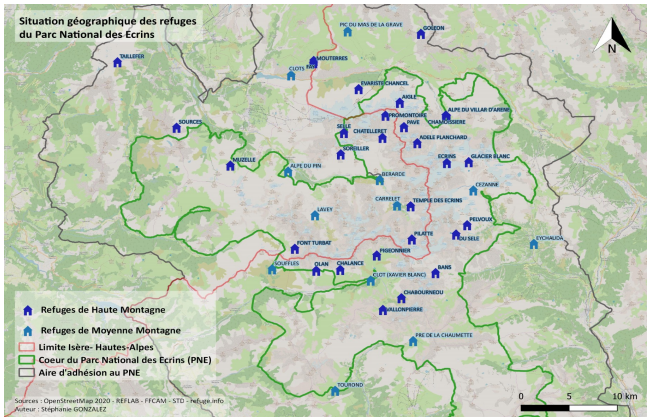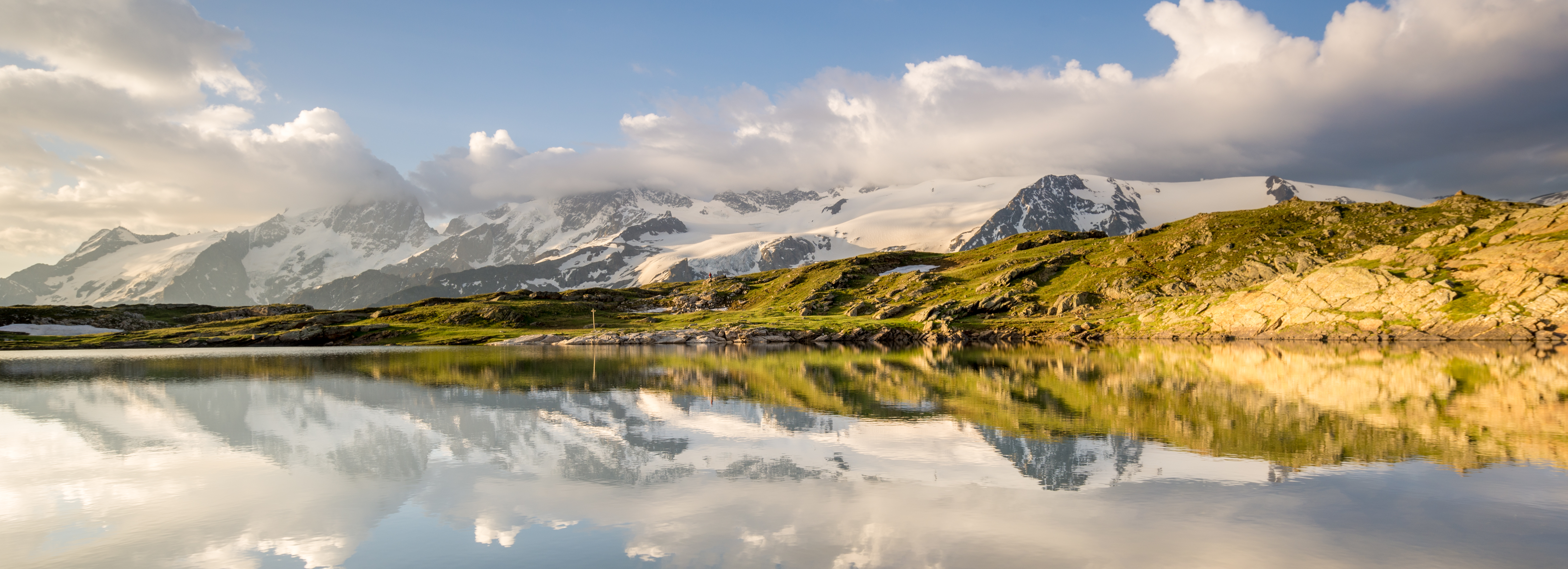Refuges Sentinelles
Experimental dispositive to observe global change in the Écrins National Park
Context
The modification of climatic conditions is extending refuges visiting period over several seasons. Thus, mountain tourism is facing increasing challenges of diversification and transition towards sustainability. Activities linked to mountains are evolving with a change in the number and typology of visitors: refuges are welcoming more families and less alpinists. Consequently, the profession of hut guardian has professionalized and diversified towards enhanced cultural, educational and heritage mediation skills. Actually, today, speeches from the guardians of huts are more oriented on biodiversity awareness, local climate change effects based on weather stations, how to preserve the environment and less on security in the mountains or the risks in certain alpine routes. Some huts guardians have chosen to leave their hut for another at a higher altitude because of these changes. Guides have seen their practice evolve too with the changes in seasons associated to climate change, the reduction of rope-parties, and the shift of activities; some have moved and others have adapted.
The initiative
The program Refuges Sentinelles links multiple actors around the topics of conservation and sustainability. It also helps to adapt to the evolution of high mountain practices and professions. This project is integrated in the broader project Alpes Sentinelles and is set up according to four research axes: biodiversity, visits and practices, risks and geomorphology, meteorology and climatology.
The main goal of the program is to develop an experimental system to observe climate change in high mountains areas. As mountain refuges are privileged observatories to environmental and cultural change, 4 huts were initially targeted as a place of measurement, observation, work and exchanges. Some counters of visitor numbers have been installed on pilot sites in order to register the number of visitors. By the end of the project, all 16 huts within the National Park of Les Ecrins should be operational.
The over-arching objective is to jointly assess environmental and cultural changes from a socio-ecosystem perspective; to develop a shared culture of observation and a collective intelligence approach between practitioners, researchers and territories through a partnership involving all stakeholders concerned by high mountains.
Results, limits and enable factors
• Diagnostics have been carried out on climatology, shelter use, geomorphology, environment, and trail practices.
• Scientific protocols have been designed, tested during field research campaigns conducted in 2017, 2018, 2019 and 2020. Some have been developed to help huts guardians raise awareness on biodiversity and share knowledge on mountain ecosystem.
• In order to capitalize and share all the data collected, a database is being developed.
• Several papers were presented in seminars.
• Educational sheets have been produced for refuges´ users in order to explain the objectives of the program and to inform on high mountain essential elements.
Eventually, the long-term program expectations are: the recognition of the RefLab team expertise in refuge aspects, the reliability of the data collected and its use by huts guardians and the project dissemination to other protected areas.

Location
Parc National des Écrins

Coordinator
Labex ITEM, Parc National des Écrins, CDP Trajectories, Agence Française de la Biodiversité

Key words
High Mountain / Mountain refuges / Good Quality of Life / Nature´s Contributions to People / Climate change adaptation

Timeframe
2016-to date

Current status
Long-lasting

Type of ecosystems
Ecosystems from high mountain altitude

More info

Updated on 1 June 2021




